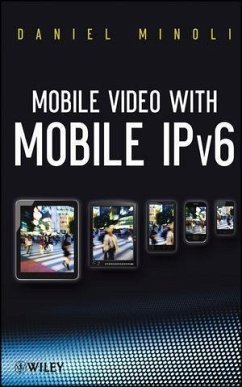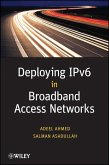Increased reliance on mobile devices and streaming of video content are two of the most recent changes that have led those in the video distribution industry to be concerned about the shifting or erosion of traditional advertising revenues. Infrastructure providers also need to position themselves to take advantage of these trends. Mobile Video with Mobile IPv6 provides an overview of the current mobile landscape, then delves specifically into the capabilities and operational details of IPv6. The book also addresses 3G and 4G services, the application of Mobile IPv6 to streaming and other mobile video outputs, and closes with a chapter on future directions.
Dieser Download kann aus rechtlichen Gründen nur mit Rechnungsadresse in D ausgeliefert werden.









